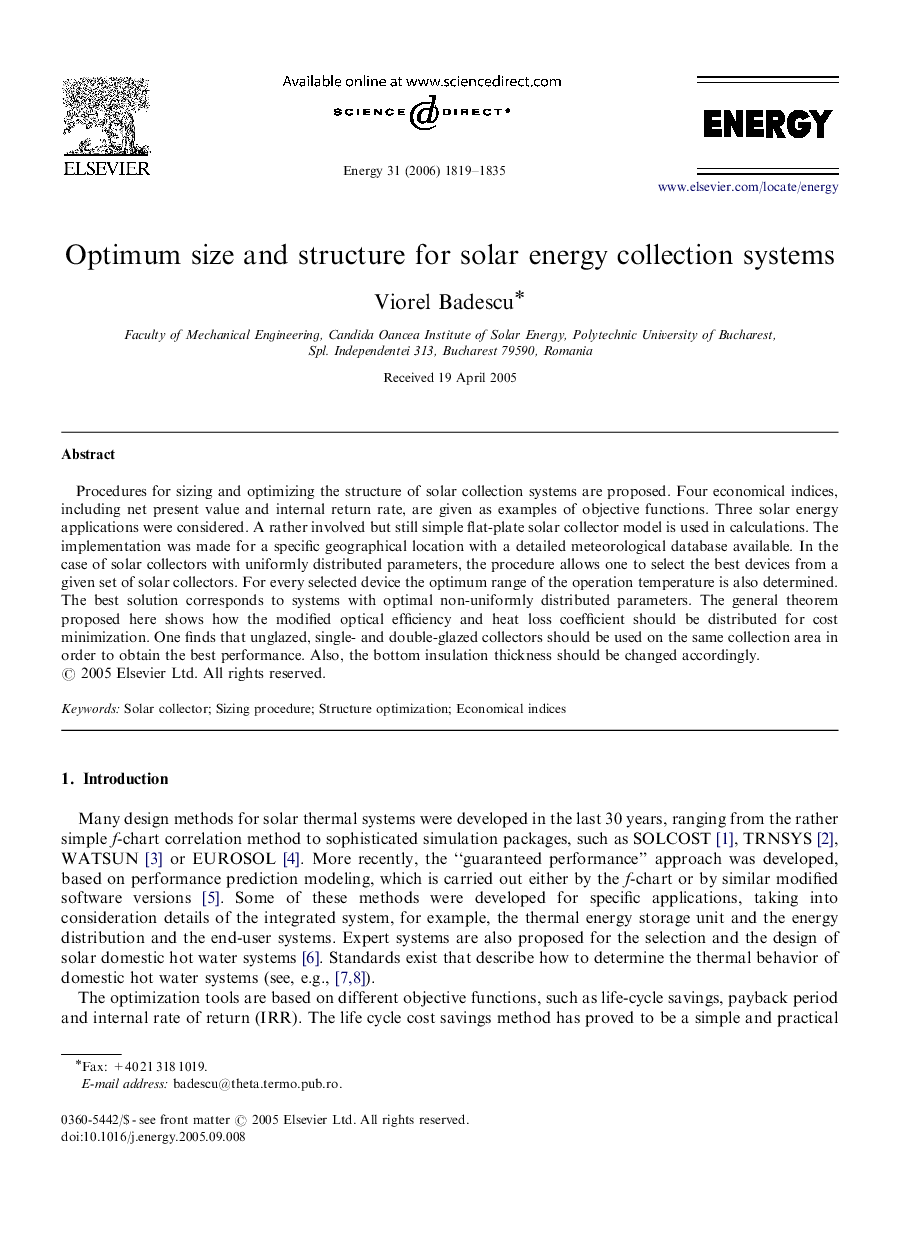| Article ID | Journal | Published Year | Pages | File Type |
|---|---|---|---|---|
| 1736158 | Energy | 2006 | 17 Pages |
Procedures for sizing and optimizing the structure of solar collection systems are proposed. Four economical indices, including net present value and internal return rate, are given as examples of objective functions. Three solar energy applications were considered. A rather involved but still simple flat-plate solar collector model is used in calculations. The implementation was made for a specific geographical location with a detailed meteorological database available. In the case of solar collectors with uniformly distributed parameters, the procedure allows one to select the best devices from a given set of solar collectors. For every selected device the optimum range of the operation temperature is also determined. The best solution corresponds to systems with optimal non-uniformly distributed parameters. The general theorem proposed here shows how the modified optical efficiency and heat loss coefficient should be distributed for cost minimization. One finds that unglazed, single- and double-glazed collectors should be used on the same collection area in order to obtain the best performance. Also, the bottom insulation thickness should be changed accordingly.
